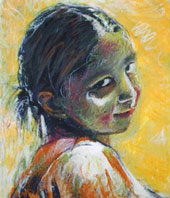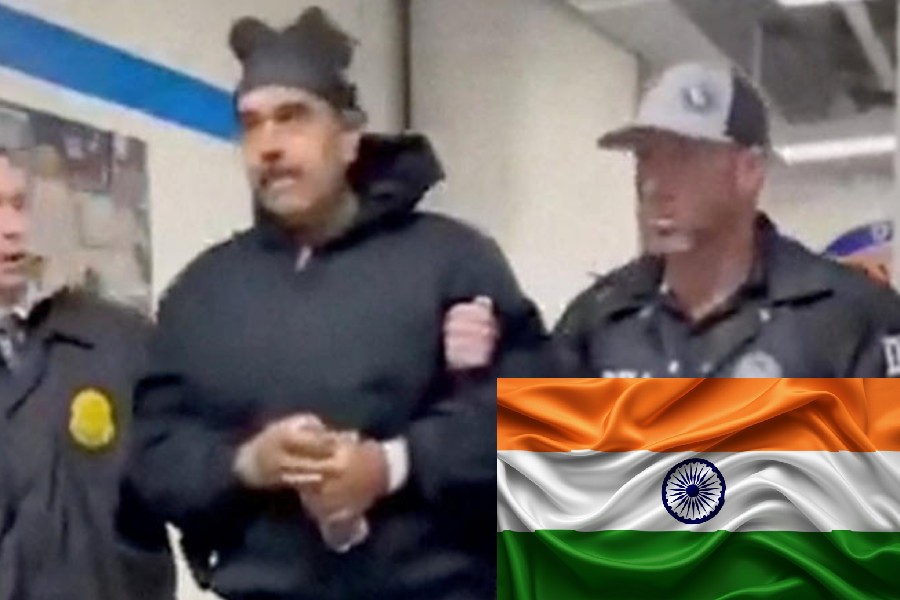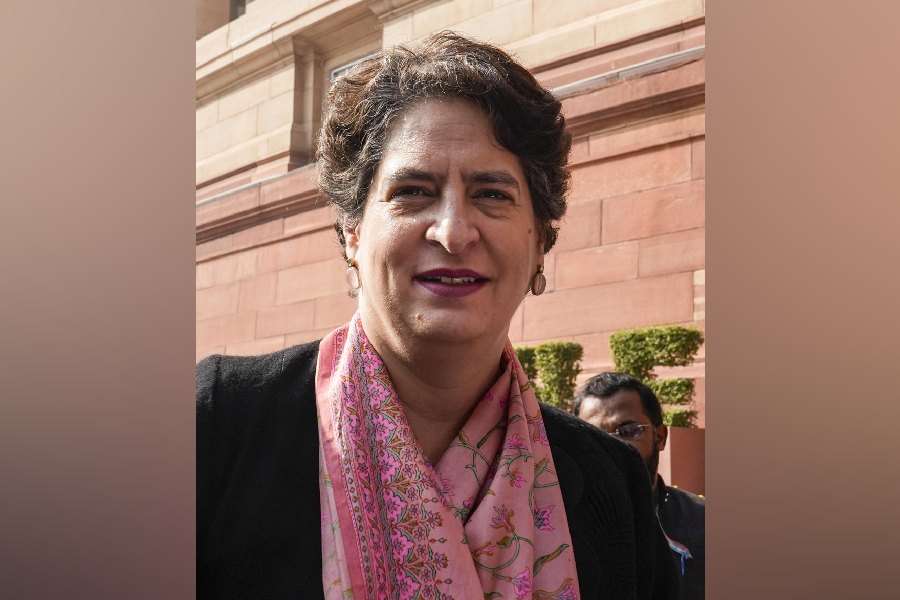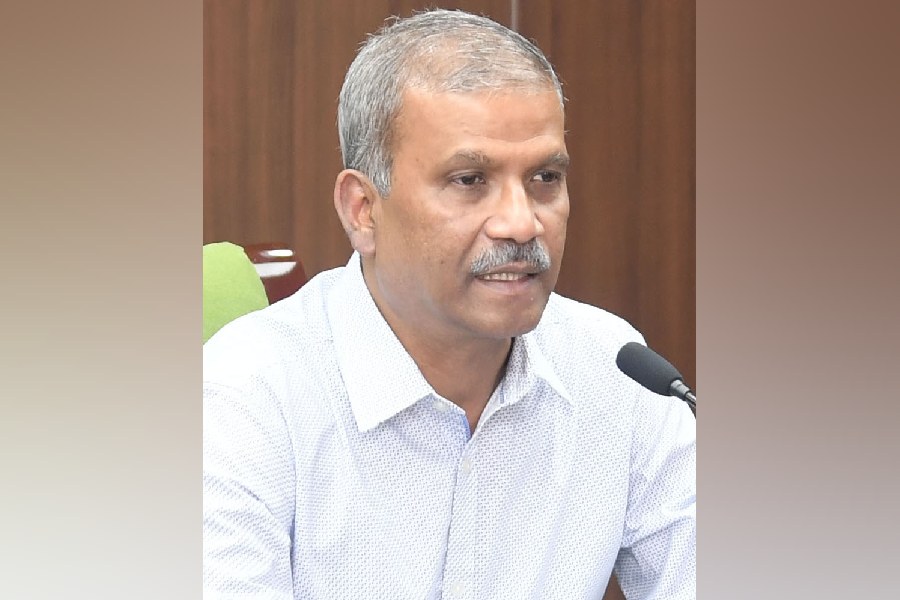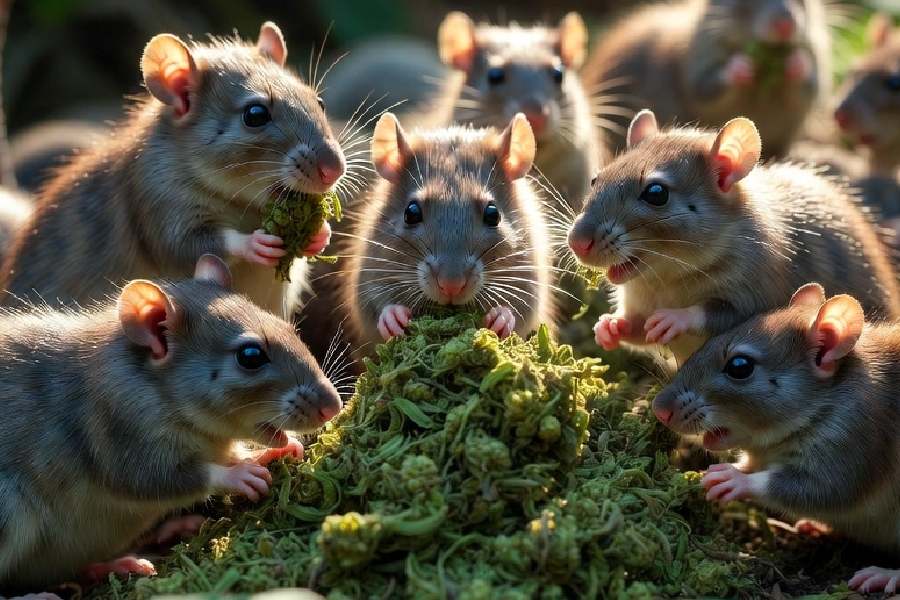|
|
| Painting by Kazi Anirban |
Brahma?s Dream By Shree Ghatage, IndiaInk, Rs 495
Shree Ghatage?s first novel, Brahma?s Dream, is set in pre-independence India and ends sometime after Gandhi?s assassination. The painful progress of India into freedom is told through the life of central character, Mohini, who struggles with a physical handicap to emerge triumphant intellectually and spiritually. The novel begins with Mohini?s dearest friend, Hansa, gifting her an unusual stone that is supposed to sparkle when held up against the sun. In spite of being vigorously rubbed by the two girls periodically, the stone refuses to reveal its glory. It is only at the end of the novel that Mohini discovers that the scarlet veins inside the pink stone have been transformed into golden nuggets of light in the sun.
The stone becomes a symbol of the novel?s central theme ? that life refuses to yield its beauty unless it is thrashed by suffering. From her birth, Mohini suffers from a rare disease, Cooley?s anaemia, that deforms her body and restricts her movements. But the handicap becomes a blessing for her, since it gives her a keen insight into the meaning of bondage without which freedom would have no meaning. And the characters around her discover that they are not as free as they would like to be although they do not suffer from any physical illness like that of Mohini. Certain motifs like that of marriage and estrangement recur in the novel.
Mohini?s mother, Kamala, was married off when she was a girl of sixteen and had to leave her familiar world in Poona to move to her husband?s ancestral home in Bombay. After suffering three miscarriages, Mohini is born to her and her daughter?s zest for life inspires Kamala to live her life anew. She shows unusual fortitude in the face of her husband?s infidelity. The central women characters in the novel combat their misfortunes bravely, never allowing themselves to slip into self-pity. They passionately fight for their independence, and education becomes a major tool in their struggle for emancipation.
At a time when India is wrestling to free itself from its British overlords, the knowledge of English is repeatedly underlined as essential for achieving independence. Women like Kamala and Vasanti, Mohini?s aunt, are taught English by their husbands and later, Kamala fights with her father-in-law to get Mohini admitted to an English-medium school. And once they have been educated in English, it becomes a source of power to these women. In times of duress, they turn to books for solace and strength.
The novel is built around the philosophical implications of Brahma?s dream. According to Hindu philosophy, the world is the dream of the creator-father and hence, an illusion. This explanation helps one endure life by reminding him that misery is as insubstantial as happiness. Significantly, Mohini, Kamala and Vasanti are loath to accept the thesis. Mohini asks her grandfather why, if the world is supposed to be Brahma?s dream, there should be any evil in it at all. Vasanti angrily rejects the dream theory because it fails to explain her suffering. Does the author use minute detailing to emphasize the tangibility of the world as a foil to the refrain that all is maya?
The author makes a sincere attempt to weave narration with philosophy. But sadly, the seams show. The high moral stance of the characters makes them exemplary and therefore, largely unreal. The details tend to tire the reader and page after page passes without anything really happening. Perhaps the novel is best appreciated as the author?s dream, meant to be forgotten as soon as it is over.

